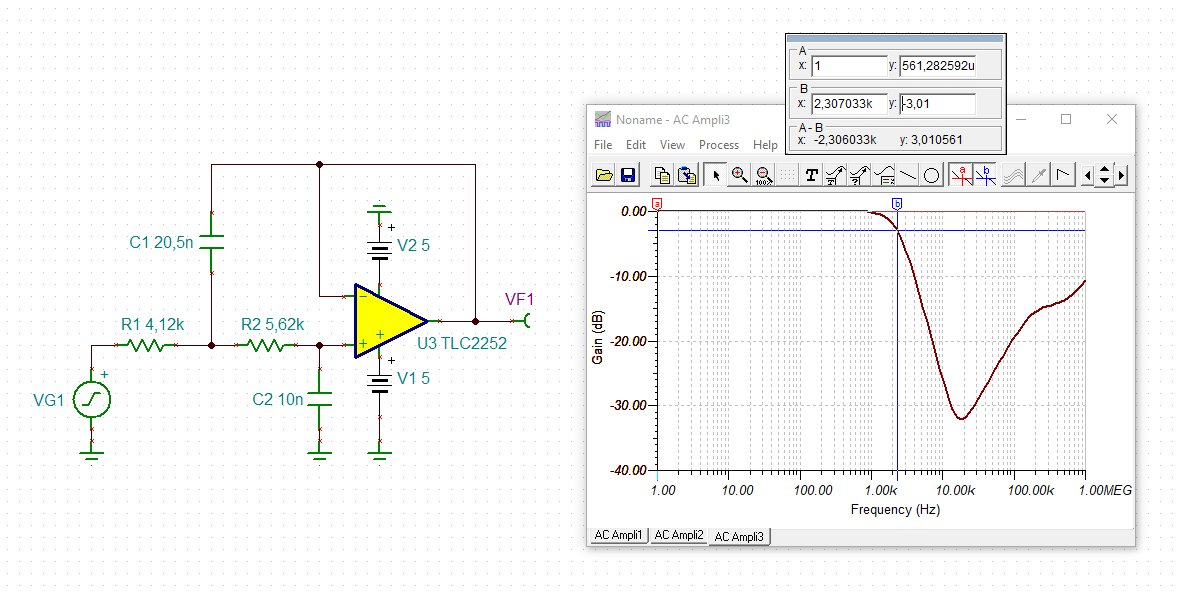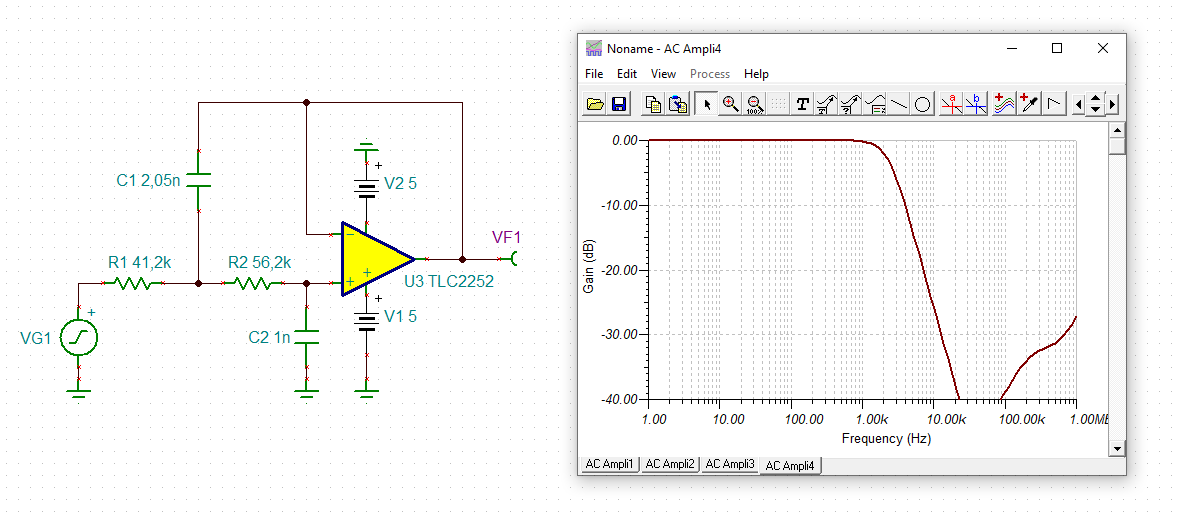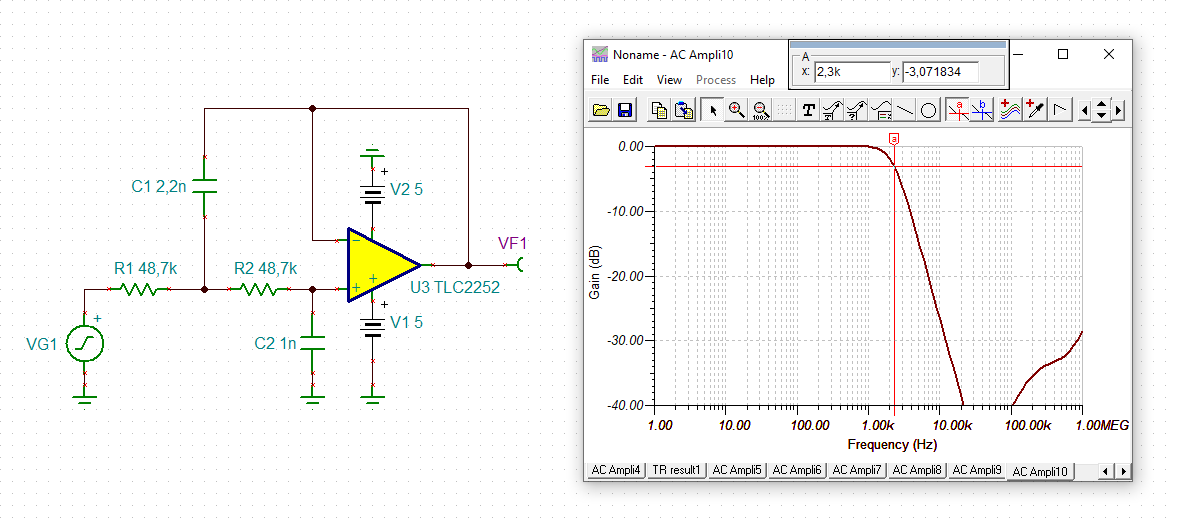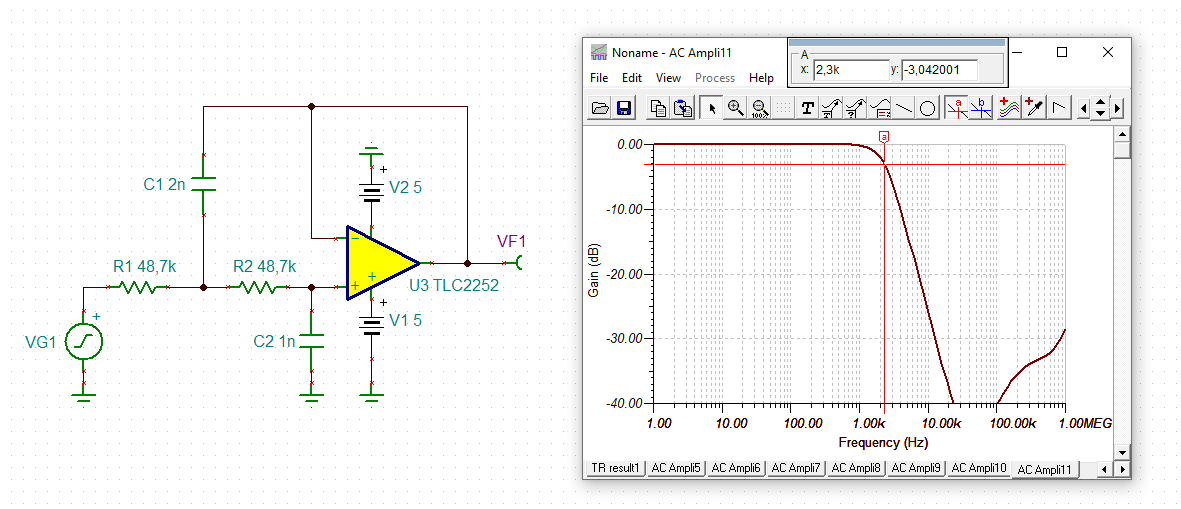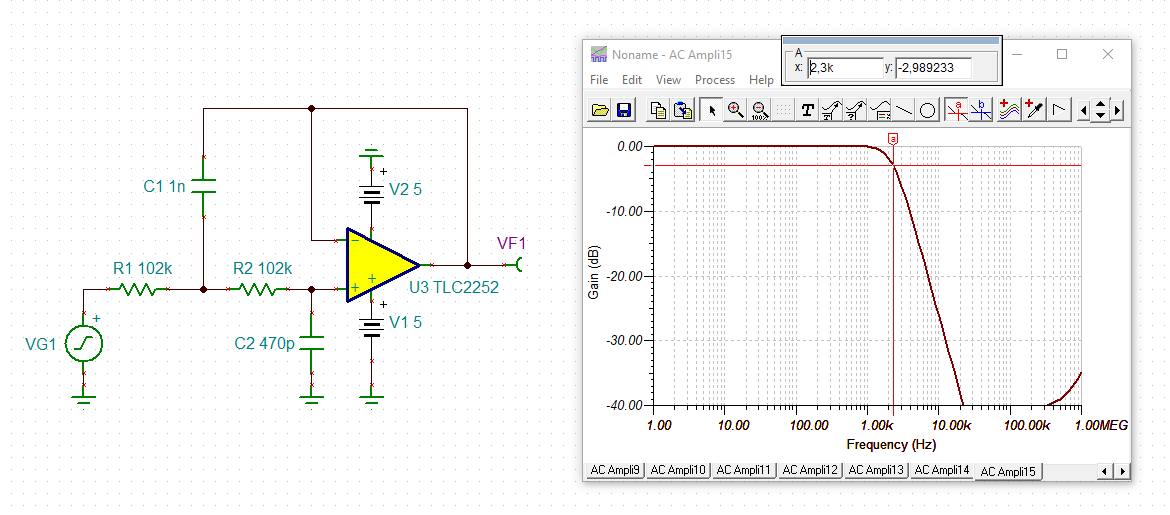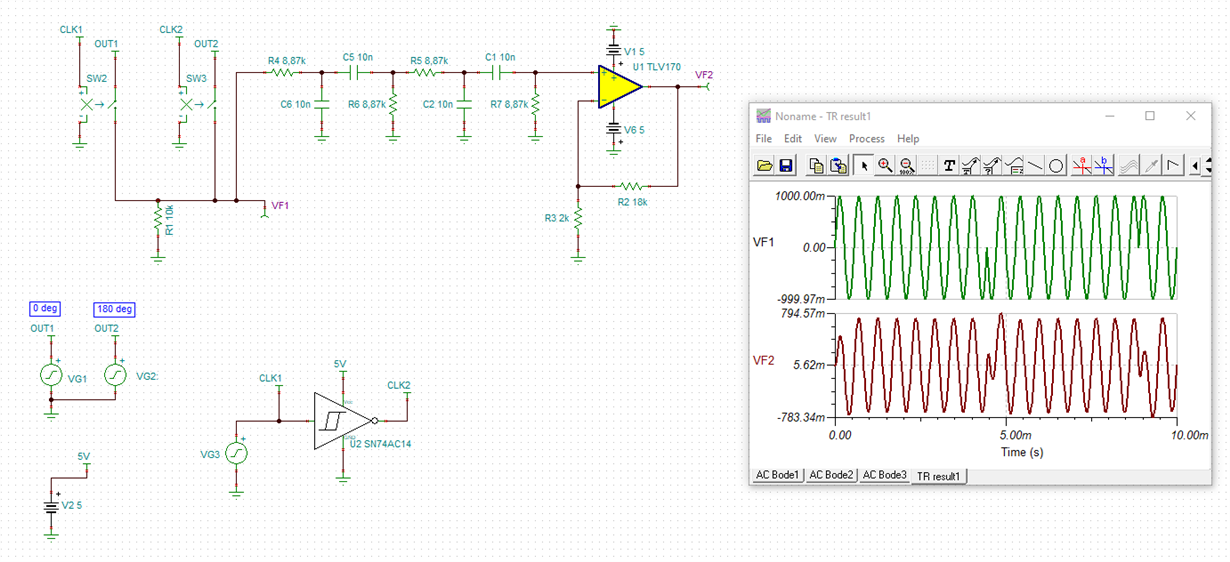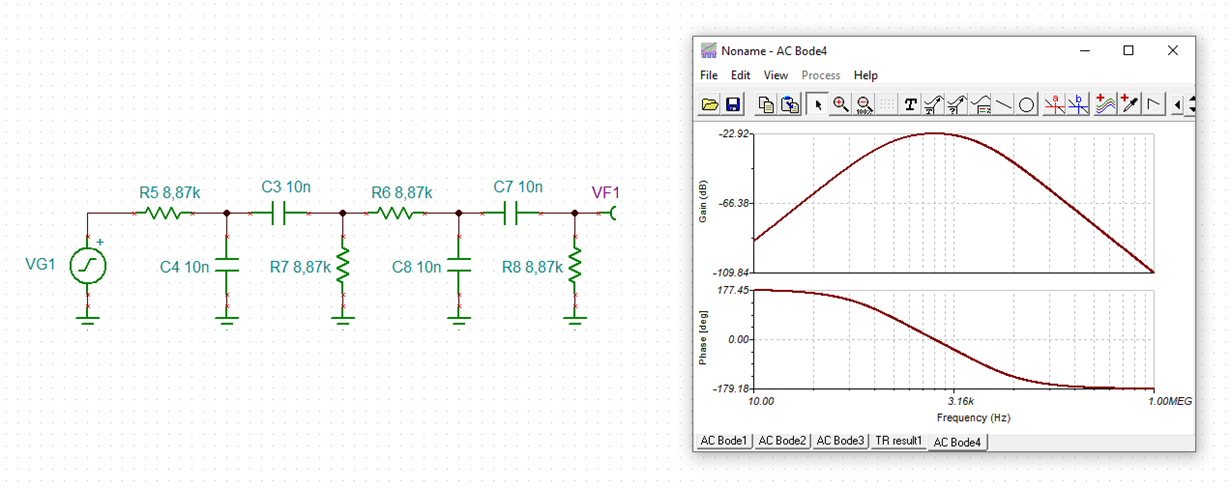Other Parts Discussed in Thread: TINA-TI, OPA320, OPA325, AFE031
Dear Sir, good day!
I made calculation for low-pass filter. Please, see attach.
The Filter Design Tool program suggested amplifier TLC2252. But it doesn't matter. The circuit has 10 nF and 20.5 nF capacitors. But these are inconvenient values. Does the program allow to change the capacitor values?
TIA
Sincerely,
Vladimir Naumenkov


